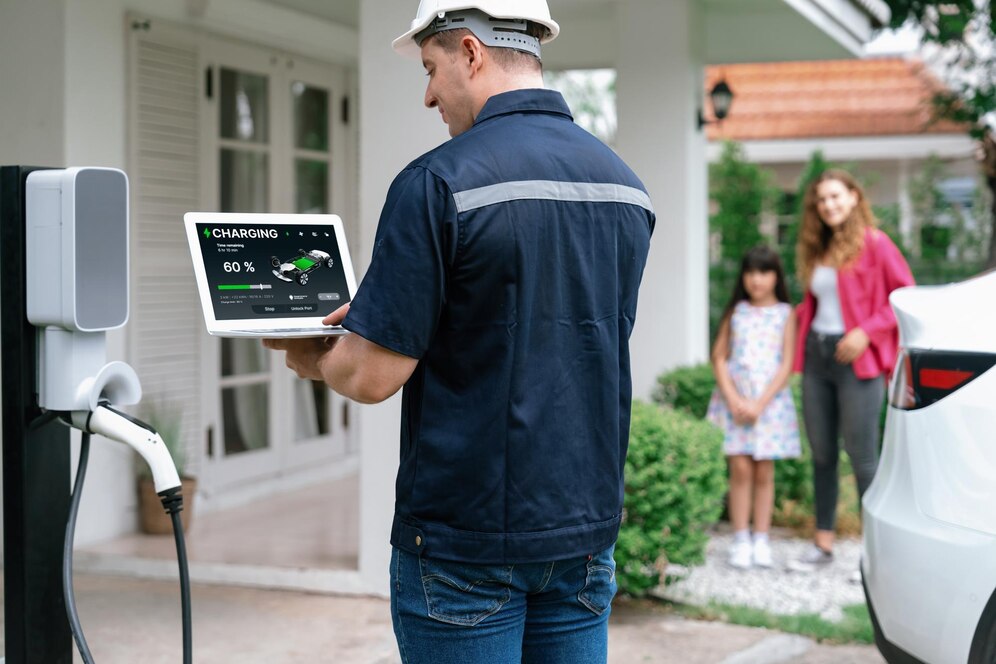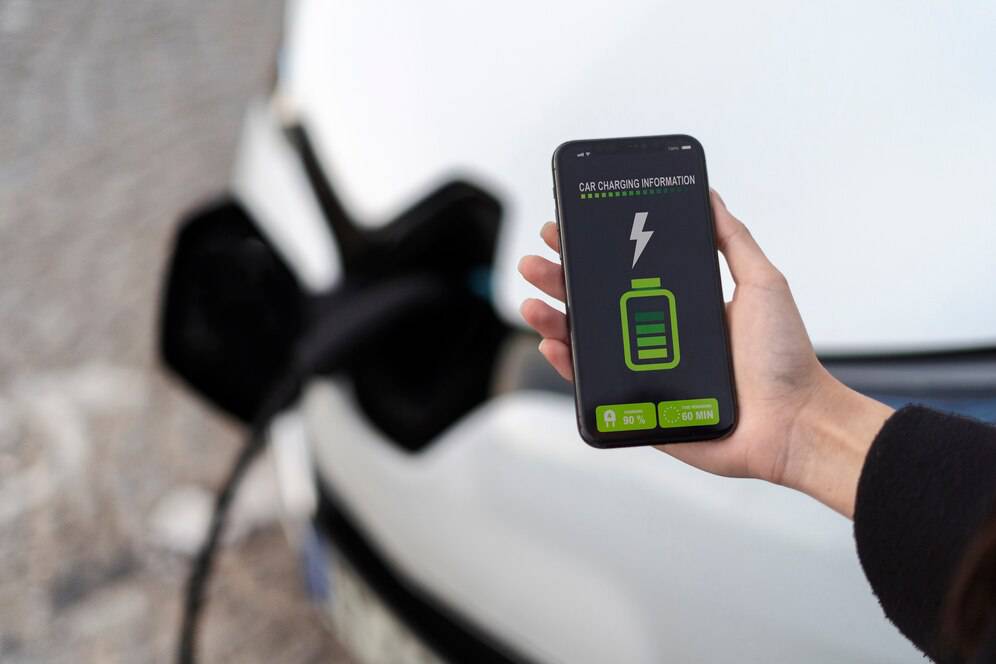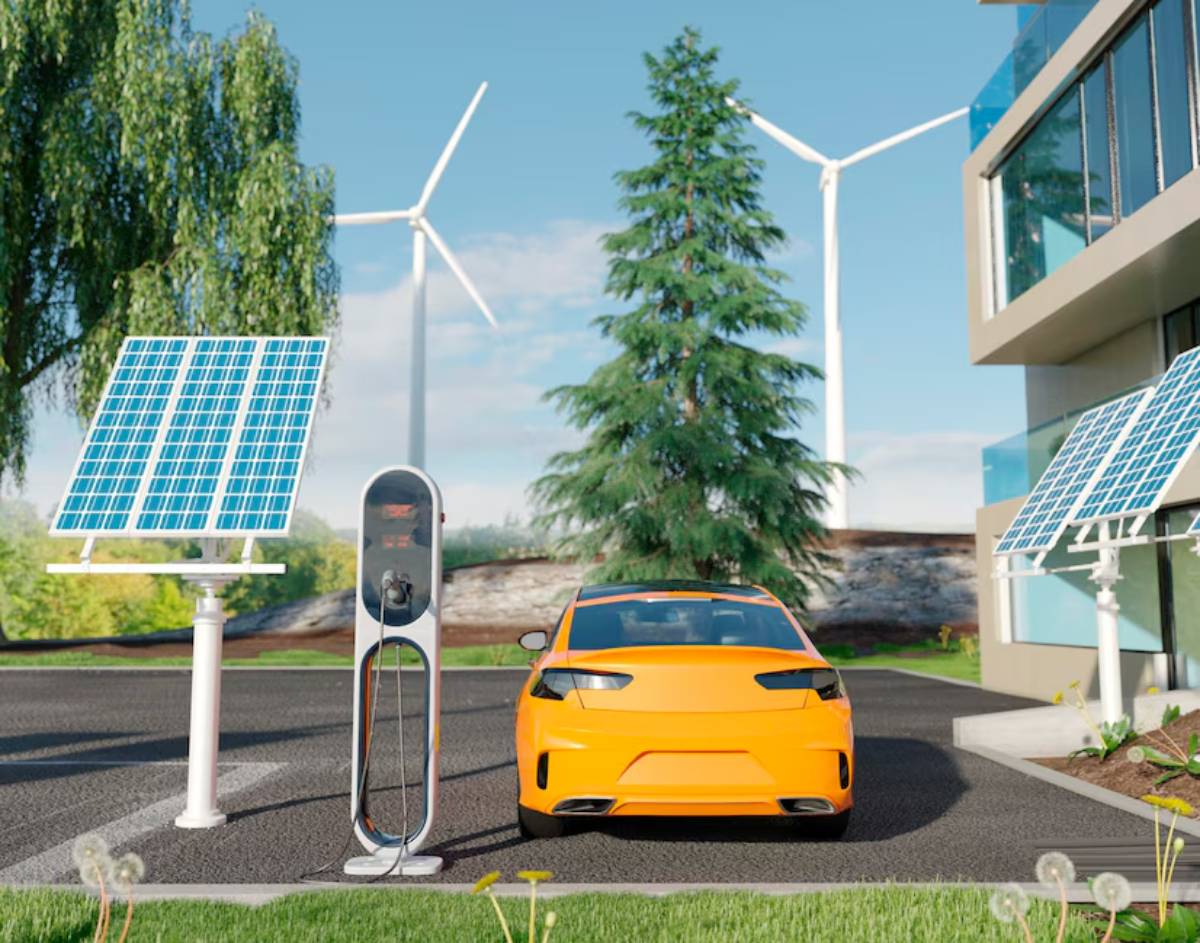The Automobiles & Vehicles Blog

Installing a Home EV Charger: A Complete Blueprint
Imagine coming home after a long day, plugging in your car like your phone, and waking up to a fully charged vehicle — no fuel stops, no waiting at public stations, just pure convenience. That’s the promise of a home EV charger, and for many drivers, it’s the final piece of the puzzle in their electric vehicle journey.
As more people switch to electric vehicles, the demand for reliable and efficient electric vehicle charging installation at home has surged. But despite the obvious perks, many potential EV owners still feel unsure about the actual process.
If you’re considering a Level 2 charger installation or just want to understand how it all works, you’re in the right place. This guide walks you through everything step-by-step — from choosing the right charger to final installation and maintenance — in clear, practical language.
Why Install a Home EV Charger?
Before diving into the how-to, let’s explore the “why”.
Faster Charging
A Level 2 home charger delivers around 7.4kW–22kW, which is 3 to 6 times faster than a standard 3-pin plug. This means most EVs can fully recharge overnight.
Cost Savings
Home charging is almost always cheaper than using public charge points. Pair it with a time-of-use tariff, and you could slash your per-mile cost significantly.
Total Convenience
No more queuing at charging stations or worrying about charging availability. Just plug in when you park.
Increased Property Value
Installing a home charger may increase your property’s resale appeal — particularly as EV ownership becomes mainstream.
Check Your Home’s Electrical Capacity
Is Your Property Ready?
Before anything else, your electrician needs to determine if your existing consumer unit (fuse box) can handle the added load of a Level 2 charger.
What They’ll Check:
- Main fuse rating (typically 60A, 80A or 100A)
- Spare capacity on your fuse board
- Location and accessibility of the electricity meter
- Distance from the board to your preferred charger spot
Tip: Even if your current supply is limited, upgrades are often available via your electricity provider — though this can add time and cost.
Choose the Right Home EV Charger
Smart vs Basic Chargers

Most new installations now favour smart chargers — these connect to Wi-Fi or apps, letting you schedule charge times, monitor usage, and receive software updates.
Factors to Consider:
- Power Output: 7.4kW (single-phase) is standard for UK homes
- Tethered or Untethered: Tethered has a built-in cable (easier daily use), untethered lets you plug in different cables (neater, more flexible)
- App Features: Some support solar charging, load balancing, or voice assistants
- Compatibility: Ensure the charger supports your car’s plug type (most use Type 2 in the UK)
Top Brands in the UK:
- Zappi (MyEnergi) – great for solar panel users
- Wallbox Pulsar Plus – compact, stylish, and powerful
- Ohme Home Pro – known for integration with energy tariffs
- Pod Point – widely used and backed by EDF
Pro Tip: Read recent reviews and check warranty terms — many offer 3 years as standard.
Book a Certified Installer
Why Certification Matters
You must use a qualified electrician, preferably one who is OZEV (Office for Zero Emission Vehicles) approved — especially if you’re applying for the EV Chargepoint Grant (more on that shortly).
What’s Included in a Standard Install:
- Site survey (virtual or in-person)
- Wall mounting and cabling up to 10 metres
- Connection to consumer unit with RCD protection
- Charger set-up and app configuration
- Electrical certification and user demo
Note: Additional fees may apply for complex installs (e.g. longer cabling, trenching, or upgrading fuse boards).
Apply for Government Support (If Eligible)
EV Chargepoint Grant (UK)
Homeowners in rental or flat properties may qualify for up to £350 off the cost of charger installation.
Requirements:
- OZEV-approved charger and installer
- Dedicated off-street parking
- Vehicle must be eligible (fully electric or plug-in hybrid)
Apply via your installer — they usually handle the paperwork.
Prepare for Installation Day
What You’ll Need to Do
- Clear the area where the charger will be mounted
- Ensure access to your consumer unit and driveway/parking spot
- Be present to approve the location and learn how the unit works
Most installations take 2 to 4 hours, depending on complexity.
Set Up and Start Charging
Post-Install Walkthrough
Your installer should show you:
- How to use the app or interface
- How to start and stop charging
- How to reset or troubleshoot common issues
Then you’re good to go. Plug in, and let your EV charge while you sleep.
Optional Upgrades and Extras
Solar Integration

Some chargers like the Zappi let you charge using solar panels, further reducing running costs.
Load Balancing
Ideal for homes with multiple EVs or high-demand devices — it prevents overloading the supply.
Cable Management
Wall-mounted hooks or retractable reels keep your cable tidy and trip-free.
Anecdotal Spotlight: Tom’s Charger Story
Tom, a freelance designer from Bath, bought his first EV (a Kia Niro) in 2024. He opted for a Pod Point Solo 3 charger with smart scheduling.
“It took less than a day from survey to install. Now I set the charge to start at midnight, and it costs me about 7p per kWh on my off-peak rate. I haven’t used a public charger in months.”
His advice? “Pay a bit more for a smart charger — the control and savings are well worth it.”
Common Questions About Home EV Chargers
How much does it cost to install a home EV charger?
- Charger unit: £500–£1,200
- Installation: £300–£600 (standard installs)
- Total: £800–£1,800, minus any grant discount
Can I use a normal 3-pin plug?
Yes, but it’s very slow (8–10+ hours) and not ideal for long-term use. It also lacks safety features found in dedicated chargers.
Will it increase my electricity bill?
Yes, but significantly less than petrol or diesel. Charging an average EV from empty to full at home costs about £10–£15, depending on your tariff.
Do I need planning permission?
Not for most homes, but listed properties or conservation areas may require it.
A Worthwhile Upgrade for Every EV Owner
Installing a home EV charger is one of the smartest moves you can make as an electric vehicle owner. It’s fast, efficient, and adds unbeatable convenience to your daily routine — not to mention long-term savings.
From checking your home’s electrical setup to choosing the right charger and installer, the process is more straightforward than it might seem. And with smart tech, grants, and customisation options, you can tailor your setup to suit your lifestyle perfectly.









